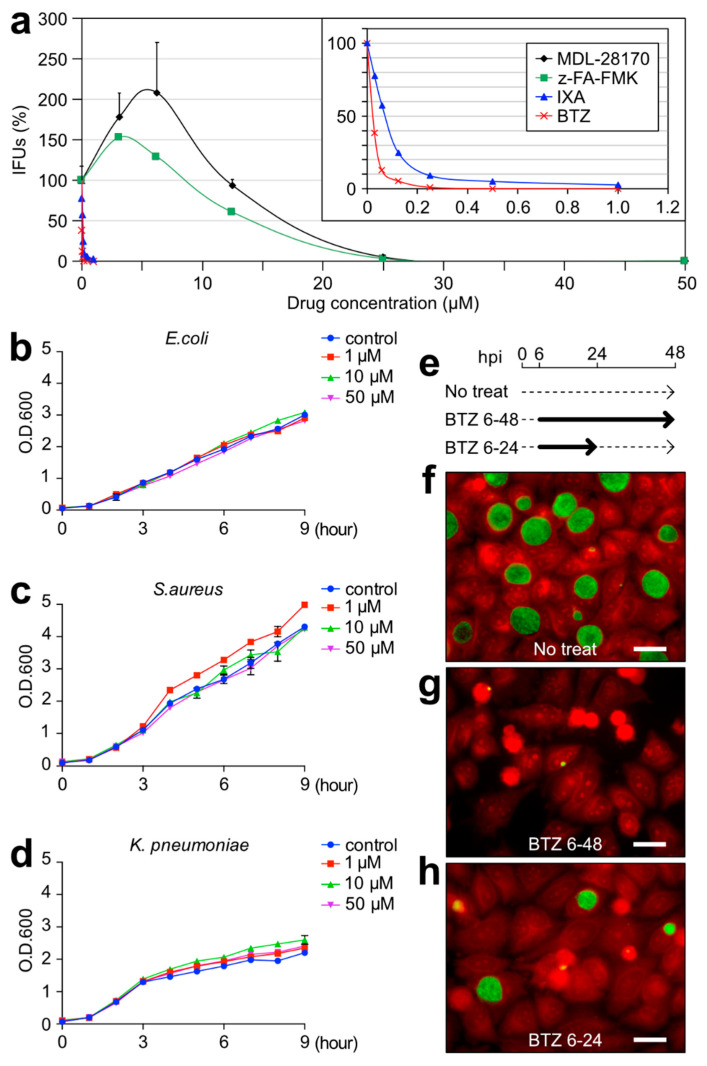Figure 3.
BTZ specifically showed an intense bacteriostatic effect against Chlamydia. (a) Growth inhibition activity of the indicated four compounds against C. trachomatis L2. The infected cells were separately treated with compounds at six- or seven-point concentrations for 48 h, and after, the IFU scores were verified. The inset represents the expansion of the graph from 0 to 1.2 μM. Data are the mean ± SD of three independent wells. (b–d) Overnight culture of E. coli (b), S. aureus (c), and K. pneumoniae (d) adjusted the turbidity of the optical density at 600 nm (OD600) = 0.1 by diluting it with fresh medium and then culturing it for 9 h with or without BTZ at the indicated concentrations. The turbidity of OD600 nm of each culture was measured. Data are the mean ± SD of three independent cultures. (e) Schematic time course of the 1 μM BTZ treatment and removal for C. trachomatis-infected cells. Solid arrows denote the treatment period, while dashed arrows denote the culture period without, or removal of, an inhibitor. (f–h) The infected cells were fixed at 48 hpi and stained as described in Figure 1. A red stain denotes Evans blue counterstaining. Scale bar, 20 μm.

